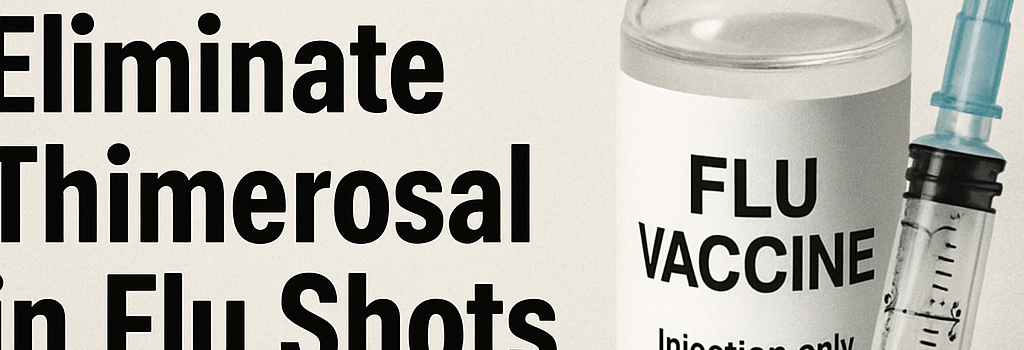CDC’s ACIP Votes to Eliminate Thimerosal in Flu Shots

In a controversial move on June 25, 2025, the Centers for Disease Control and Prevention’s (CDC) Advisory Committee on Immunization Practices (ACIP) voted overwhelmingly to rescind federal recommendations for seasonal influenza vaccines containing the preservative thimerosal. The decision follows a single anti-vaccine presentation despite more than 25 years of peer-reviewed data confirming thimerosal’s safety profile.
Background: Thimerosal in Vaccines
Thimerosal is an ethyl-mercury based antiseptic agent historically added to multi-dose vaccine vials to inhibit bacterial and fungal growth. Each 0.5 mL dose typically contains up to 25 μg of ethylmercury, which pharmacokinetic studies show is cleared from the bloodstream within days, contrasting sharply with the prolonged half-life of methylmercury found in certain seafood.
ACIP Meeting and Process Irregularities
- Traditionally, ACIP undertakes a rigorous review process: data collection, systematic meta-analyses, public comments, benefit-risk modeling, and equity assessments.
- On June 25, the committee omitted its standard review, hearing only a presentation by Lyn Redwood, president emerita of Children’s Health Defense, which cited outdated or discredited studies linking thimerosal to neurological harm.
- Key CDC background documents summarizing two dozen robust epidemiological and toxicological studies were removed from the agenda, reportedly at the behest of Health Secretary Robert F. Kennedy Jr.’s office.
Expert Opinion: Pharmacokinetics and Toxicology
“Ethylmercury is metabolized to thiosalicylate and excreted via bile and urine within 7 days,” explains Dr. Emily Carter, toxicologist at the National Institute of Environmental Health Sciences. “No credible evidence links standard vaccine doses to neurotoxicity.”
New Section: Regulatory Review Processes
Under the Federal Advisory Committee Act (FACA), ACIP recommendations must be based on evidence graded by the GRADE framework (Grading of Recommendations Assessment, Development and Evaluation). This entails:
- Systematic Literature Reviews: Identification of all relevant randomized controlled trials and observational studies.
- Benefit-Risk Modeling: Quantitative assessment of prevented influenza cases and hospitalizations versus theoretical adverse events.
- Stakeholder Input: Public commentary and expert panels from WHO, FDA, and industry partners.
By bypassing these steps, the committee’s vote raises questions about procedural integrity and compliance with FACA guidelines.
New Section: Global Supply and Cost Impact
Approximately 96% of U.S. flu vaccines are single-dose, thimerosal-free formulations. However, in low- and middle-income countries (LMICs), multi-dose vials with thimerosal are crucial for cost containment:
- Multi-dose vials reduce per-dose manufacturing and cold-chain expenses by up to 30%.
- UNICEF and GAVI procurement data show that thimerosal-preserved multi-dose vials account for 70% of global influenza vaccine volume.
If other countries emulate the U.S. recommendation, vaccine prices in LMICs could rise from $3 to $6 per dose, potentially reducing coverage by an estimated 15–25%.
ACIP Vote and Immediate Implications
The seven-member panel cast three separate votes for children, pregnant women, and adults, each passing 5–1 with one abstention. Only Dr. Cody Meissner (Dartmouth Geisel School of Medicine) dissented, citing strong safety data, and one member abstained over technical wording concerns.
Looking Ahead
ACIP Chair Dr. Martin Kulldorff signaled a forthcoming vote on updating recommendations for the combined MMRV (measles-mumps-rubella-varicella) vaccine, indicating continued shifts in U.S. immunization policy under the new administration.
Additional Context: AI and Data Mining in Vaccine Safety Surveillance
Modern vaccine safety monitoring leverages AI-powered pharmacovigilance systems that analyze electronic health records and spontaneous adverse event reports in near real-time. Machine learning models have consistently failed to detect any signal associating thimerosal-containing vaccines with neurodevelopmental disorders, reinforcing the consensus of decades of conventional studies.